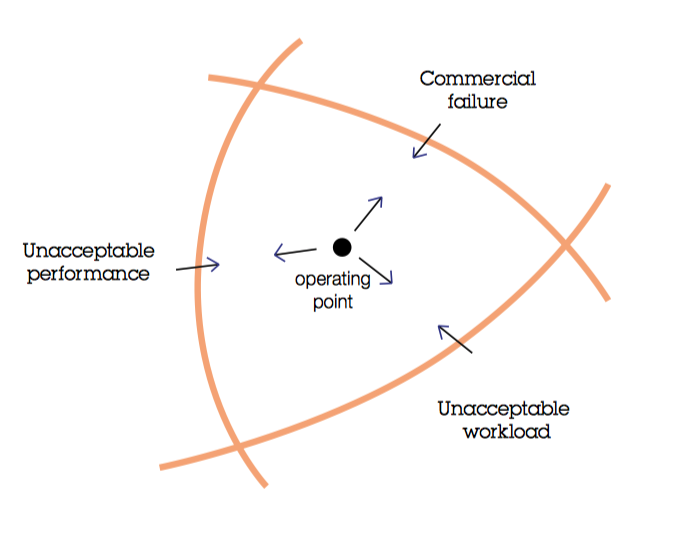Staying inside the bounds
When leaders talk about doing ‘whatever it takes’ to get a project ‘over the line’, they probably think they’re motivating people with a sporting metaphor. But in complex projects there are really three lines. And you don’t want to cross any of them.
We find Jens Rasmussen’s safe-operating model useful here. He posited three failure boundaries: commercial, workload and acceptable performance (see image). To succeed, a project should operate within these confines. After all, a blown budget or due date is a commercial failure, even if the project was a ‘technical success’.
Explicitly or implicitly, management applies pressure to avoid such a commercial failure. In one scenario, shortcuts are taken and the acceptable performance line is crossed. In another, project teams simply work harder and succeed through ‘heroic endeavour’. While this can work in a pinch, it must not become the norm.
If the risks of overstepping these boundaries go unchecked, the company’s reputation is at stake. And if the team gets away with it, the risk of catastrophe later on escalates.
Proper project risk management seeks to identify these boundaries during a resilience appraisal, negating the need for a project rescue down the track.

Diagram of Failure Boundaries


